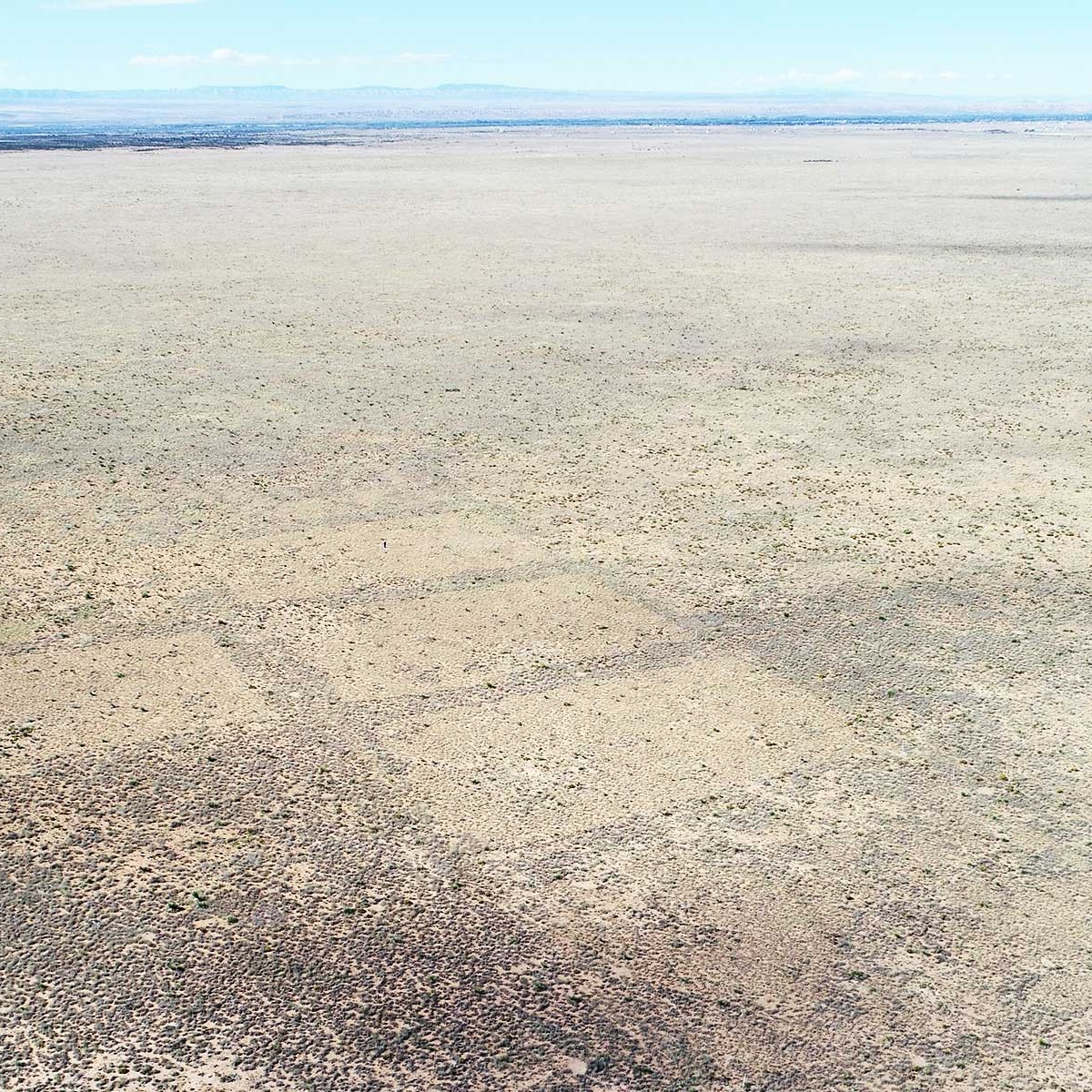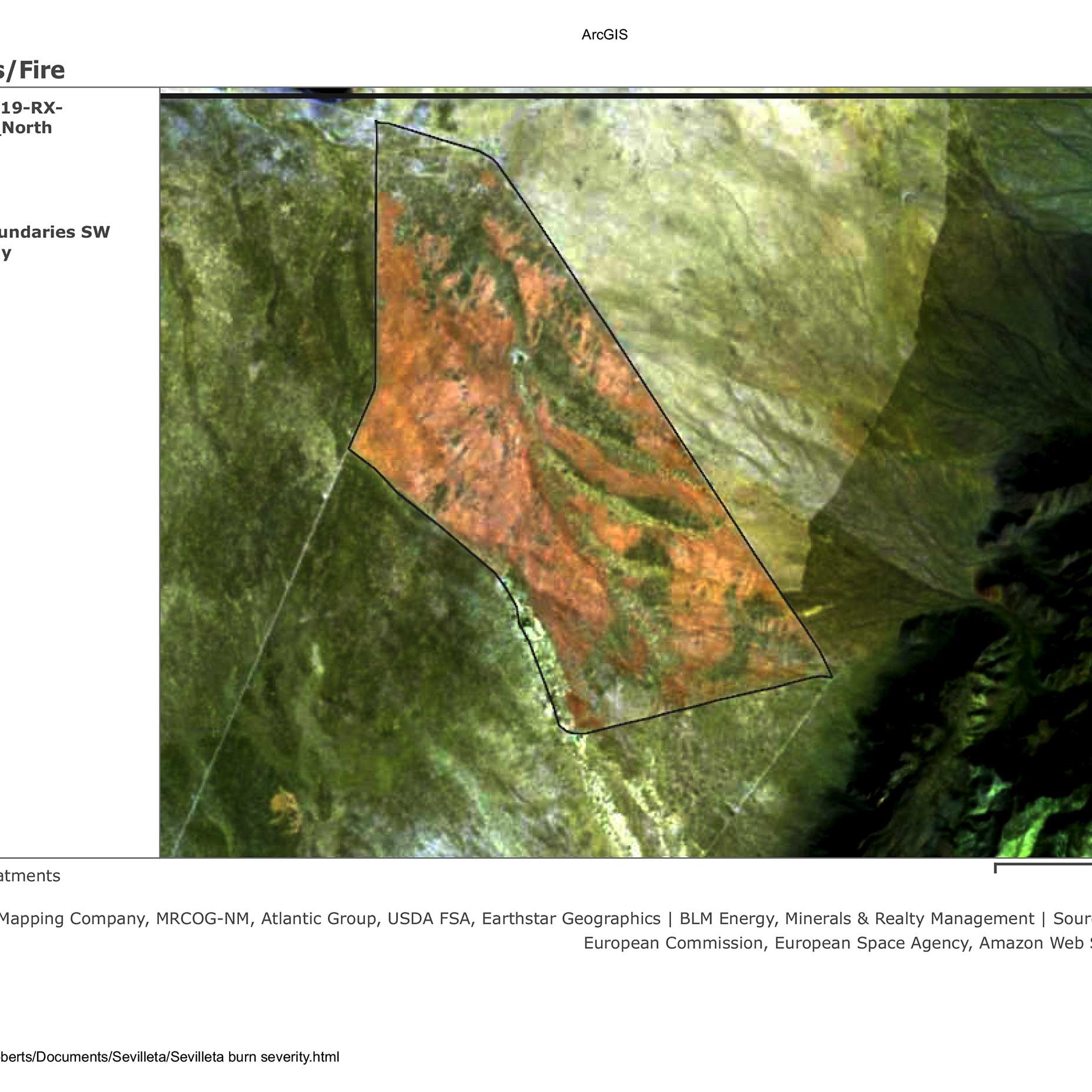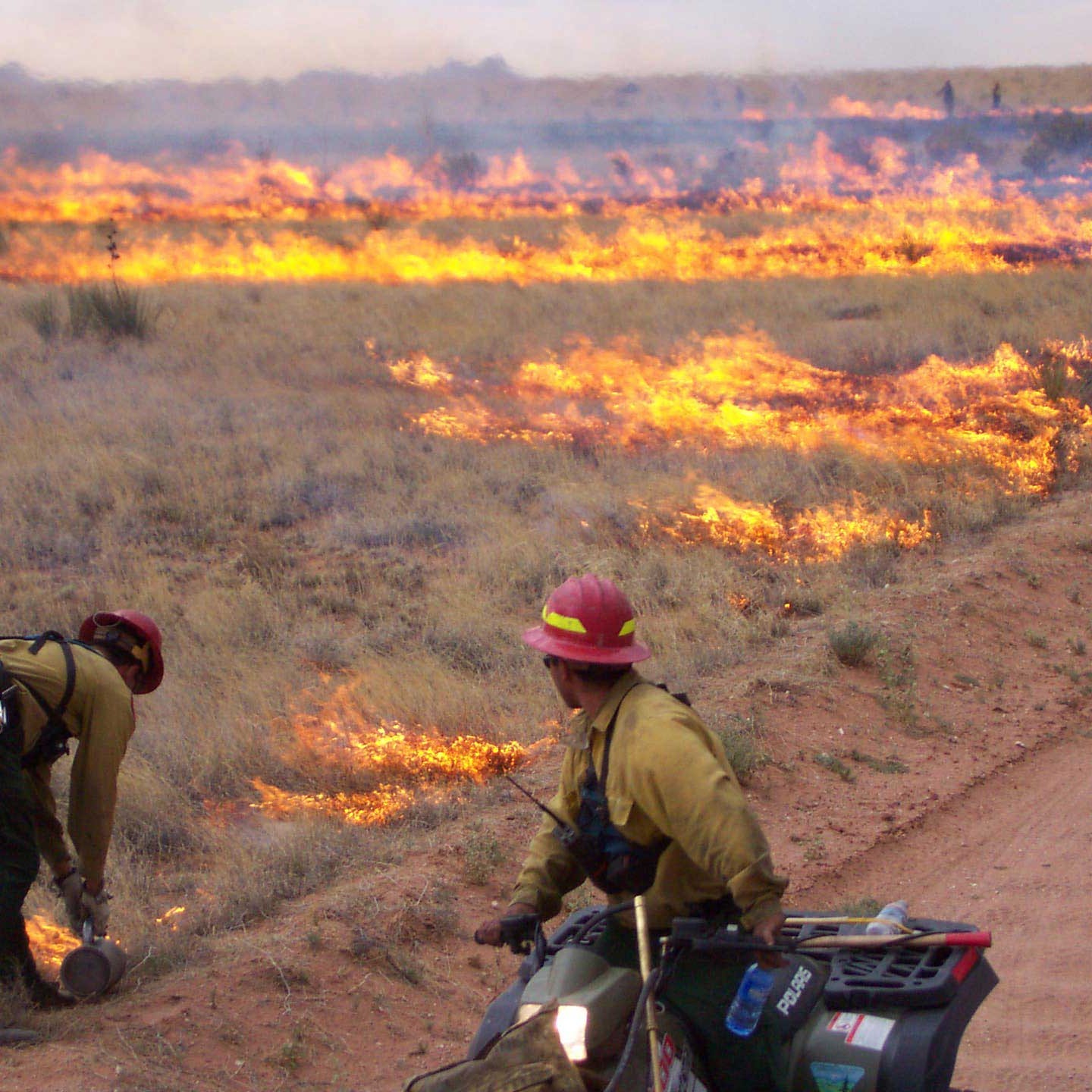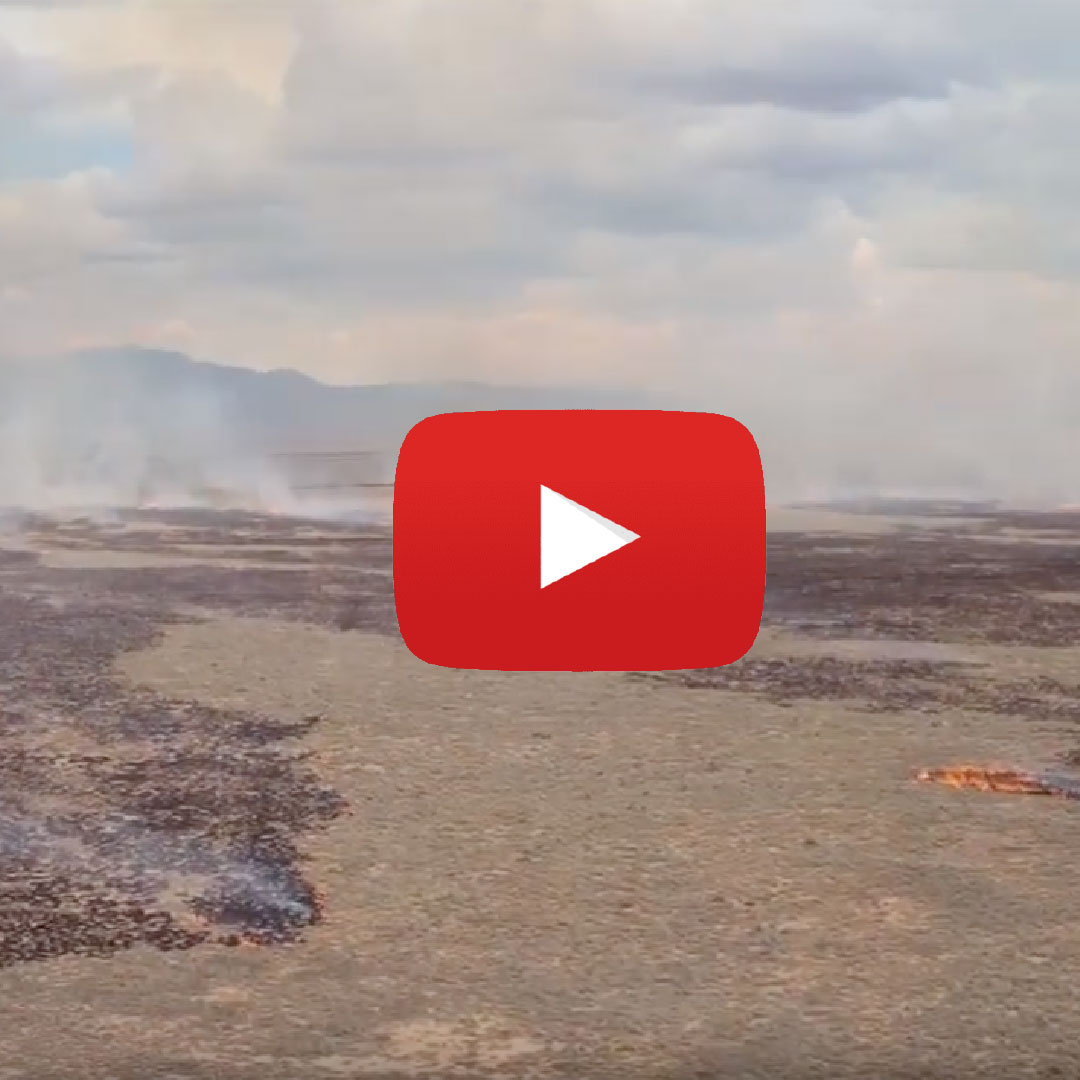Objective:
To determine whether seasonality of the timing of prescribed fire matters for management fires in Sevilleta grasslands.
Novelty:
The regional climate consists of two precipitation periods, winter/spring rains and the summer monsoon separated by a ~2 month hyperarid period. Managers assumed that natural fires occurred primarily during the hyper-arid period prior to the monsoon, when fuel is available and dry lightning strikes often occur. As a consequence, management burns were scheduled for this period, but regional wildfires often prevented management burns from taking place. The purpose of the ongoing Fire Seasonality experiment is to determine if more flexible burning schedules allow for management burns to occur when local fire crews are less occupied fighting regional wildfires.
Design:
The study consists of 20 plots each of which is 20 m x 40 m. Four treatments include unburned or management burns applied in mid-March, late-June, or late-November, with n = 5 replicates of each treatment. Experimental fires are carried out by the local Fish and Wildlife Service fire crew. Thus far, each plot has been burned twice: 1) November 2007, March 2008 and June 2008, and 2) November 2016, March 2017 and June 2017.
Responses:
Each replicate plot has 10 permanently located 1 m x 1 m quadrats for estimating plant species composition with visual estimates of cover by species. Vegetation sampling occurs in spring and fall annually. In fall 2018, all plots were also sampled with high resolution (5 cm) drone imagery.
Supporting Documents:
Effects of Fire Seasonality on Chihuahuan Desert Grasslands at the Sevilleta National Wildlife Refuge, New Mexico (2007-2020). https://portal.edirepository.org/nis/mapbrowse?scope=knb-lter-sev&identifier=230
2003 Prescribed Burn Effect on Chihuahuan Desert Grasses and Shrubs at the Sevilleta National Wildlife Refuge, New Mexico: Species Composition Study (2004-2018). https://portal.edirepository.org/nis/mapbrowse?scope=knb-lter-sev&identifier=166
2003 Prescribed Burn Effect on Chihuahuan Desert Grasses and Shrubs at the Sevilleta National Wildlife Refuge, New Mexico: Shrub Recovery Study (2003-2009). https://portal.edirepository.org/nis/mapbrowse?scope=knb-lter-sev&identifier=164
Ladwig, L.M., S.L. Collins, P. Ford and L.B. White. 2014. Chihuahuan Desert grassland responds similarly to fall, spring, and summer fires during prolonged drought. Rangeland Ecology and Management 67: 621-628. https://doi.org/10.2111/REM-D-13-00133.1




